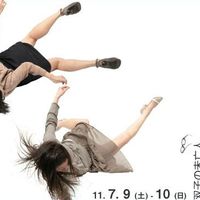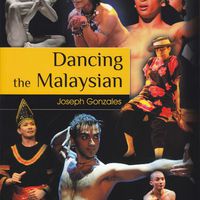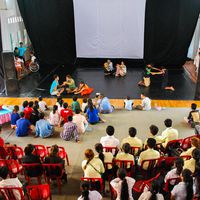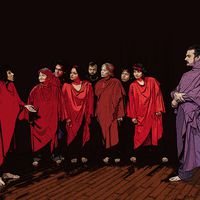Art & Disabilities in Southeast Asia | Beautiful Gate | Malaysia

Contributed by Bilqis Hijjas
This September, ASEF culture360 continues its collaboration with ArtsEquator.com on the topic of Art & Disabilities in Southeast Asia. Dance critic Bilqis Hijjas meets with the dance troupe of Beautiful Gate to discuss challenges faced by dancers with disabilities in Malaysia.
[caption id="attachment_65282" align="aligncenter" width="394"] World Vision- 30 hour Famine (2016)[/caption]
World Vision- 30 hour Famine (2016)[/caption]
Low Mee Li is a dancer who uses a wheelchair. A diminutive figure, she has straight hair, a ready laugh, and long sinewy arms which can curl into protective gestures or extend to an eagle’s wingspan. For over 10 years, she has led the dance troupe of Beautiful Gate Foundation for the Disabled , based in a suburb outside Kuala Lumpur, Malaysia. When I visited Mee Li and her troupe at their weekly rehearsal recently, I noticed that although some of the challenges she faces are unique to dancers in wheelchairs, many of them draw parallels with the lives of able-bodied dancers in Malaysia.
[caption id="attachment_65280" align="alignleft" width="436"]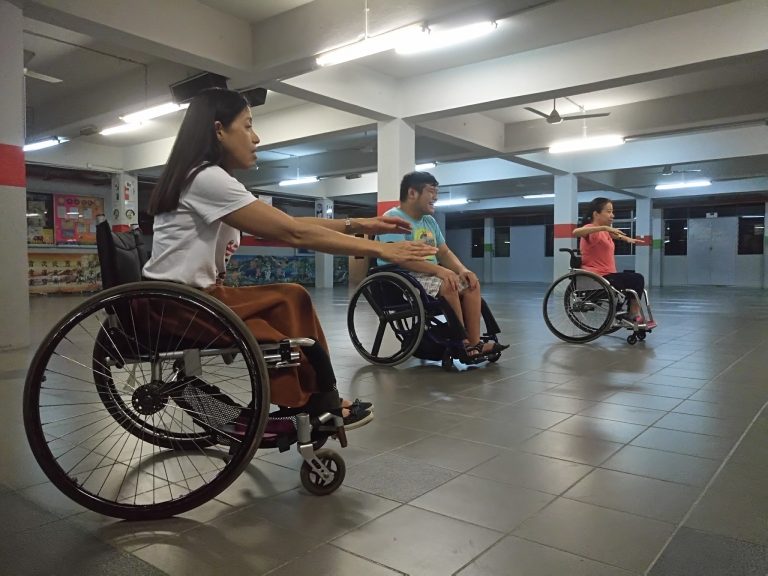 Low Mee Li, Seow Poh Ling and Chow Chen Yong Photo Credit: Bilqis Hijjas[/caption]
Low Mee Li, Seow Poh Ling and Chow Chen Yong Photo Credit: Bilqis Hijjas[/caption]
People with disabilities are often rendered invisible in Malaysian daily life. Despite having passed the Persons with Disabilities Act in 2008, the country suffers from a lack of wheelchair-accessible public transport, of wide, even pavements and the enforcement of accessibility standards in building codes. These barriers make it challenging for people using wheelchairs to attend school, commute to work or live independently, let alone aspire to perform on stage.
And yet a tiny community of dancers in wheelchairs does exist in Malaysia. Dua Space Dance Theatre has worked for several years with dancers from Shuang Fu Independent Living Association. Dua Space has also featured Chung Hong Tsin, a dancer in a wheelchair, in several of their mainstream works, including the full-length production Black & White @ Variation (2011). Hong Tsin went on to found his own performance company, PassionMove, and presented his work Mess·High at Damansara Performing Arts Centre in 2015. As usual, in a small community everybody knows everybody: recently, Hong Tsin has been the main instructor of the Beautiful Gate Performing Arts Troupe.
But the Beautiful Gate troupe, Mee Li tells me, is struggling. Aside from Hong Tsin, they find it difficult to engage teachers who understand their physical potential, as well as their physical limitations. Hong Tsin is now dedicating himself to his career as a competitive wheelchair badminton player, and has less time to devote to dance.
The Beautiful Gate group also suffers from the smallness of its community in other ways. Individual dancers have specific genre preferences – some are fans of k-pop, others prefer ballroom – so it is tricky to mobilise the entire group in the pursuit of a single goal, especially when most of the dancers treat dance as just a hobby.
[caption id="attachment_65276" align="alignright" width="299"]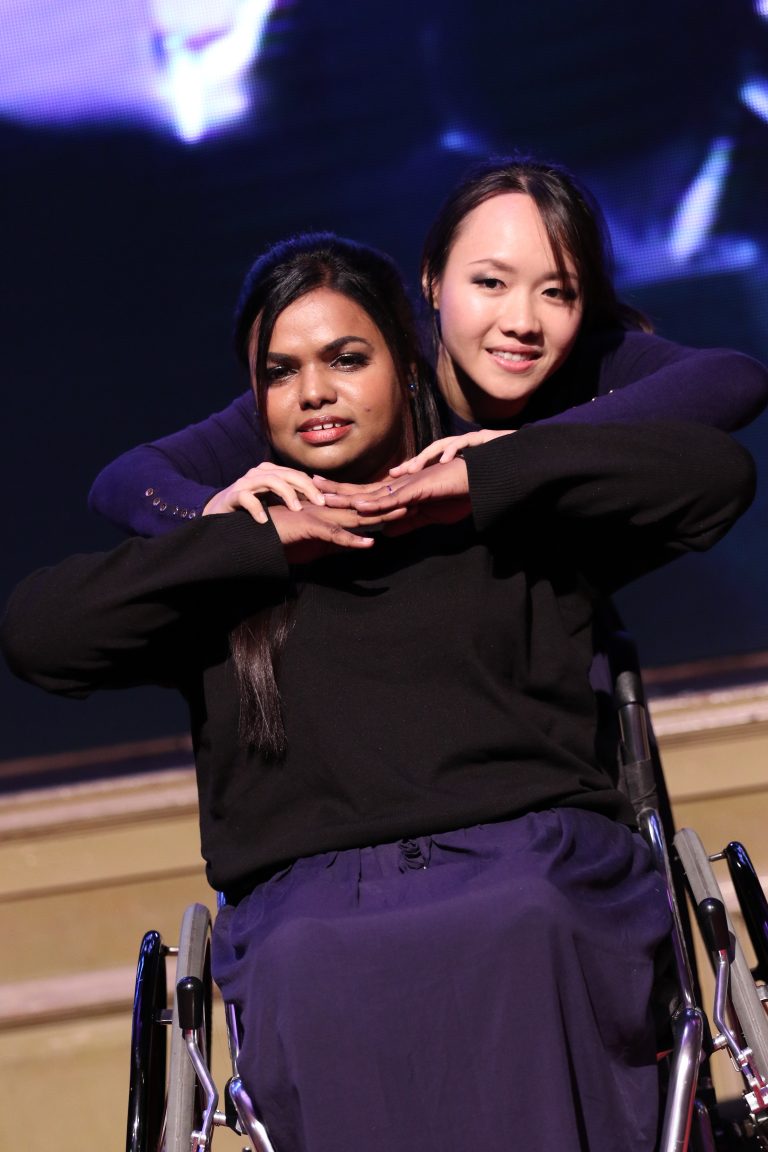 Chitra Subramanium and Amy Wong (2016)[/caption]
Chitra Subramanium and Amy Wong (2016)[/caption]
Add to that the challenges specific to wheelchair users such as getting to reherasals, wheelchair dances also need a larger stage space than usual, which some venues cannot provide. The scarcity of widespread step-free access in Malaysia means that able-bodied volunteers must scout locations before the dancers in wheelchairs can visit, and ramps often need to be built to accommodate them.
“Sometimes I feel like giving up. It is lonely to be the group leader, sometimes the only one who has the passion,” Mee Li says. “But I have a responsibility as a leader to continue.”
She continues, she says, because she loves to dance, but for her, as for many Malaysian dancers, dance is always going to be an amateur activity. Mee Li works full time at Beautiful Gate as an accountant, which gives her extra insight into the group's finances. Many of their performance opportunities are commercial gigs, like corporate annual dinners. But, for them as for other Malaysian dance groups, current financial straits mean these opportunities are now thin on the ground. The group used to perform three times a month; now, they would be lucky to snag a single gig a month.
Other aspects of their practice strike me as similar across the dance community. The method of rehearsal, for example, is largely the same. Although choreographing for wheelchairs involves allowing more time for a wheelchair user to move from one place to another, the intention is still for the dancers to perform synchronized movements neatly in time with the music. Mee Li tells me she is now focusing on perfecting her timing, as well as practicing how to display emotion.
There are particular sociocultural similarities across the communities, too. Like the majority of the Malaysian dance community, the dance in wheelchair community seems segregated by ethnicity and language group. All the dancers at the rehearsal I watched were ethnically Chinese, and the rehearsal was conducted in Mandarin. The group has worked outside its community boundaries, notably, in a full-length work, Tracks Contemporary Dance Drama choreographed by ASWARA graduate Mohd Khairi Mokthar in 2014. But issues of familiarity and convenience enforce a more limited horizon.
And despite increasing access to the performances of other dancers in wheelchairs around the world available through websites like YouTube, the work of wheelchair dancers in Malaysia also seems to reinforce classical ideals of ablebodiedness. In 1998, American dance theorist Ann Cooper Albright wrote in a seminal article about dance and disability, "When a disabled dancer takes the stage, he or she stakes claim to a radical space." But, she warns, “Unless we consciously construct new images and ways of imaging the disabled body, we will inevitably end up reproducing an ablist aesthetic.”
[caption id="attachment_65281" align="alignleft" width="444"]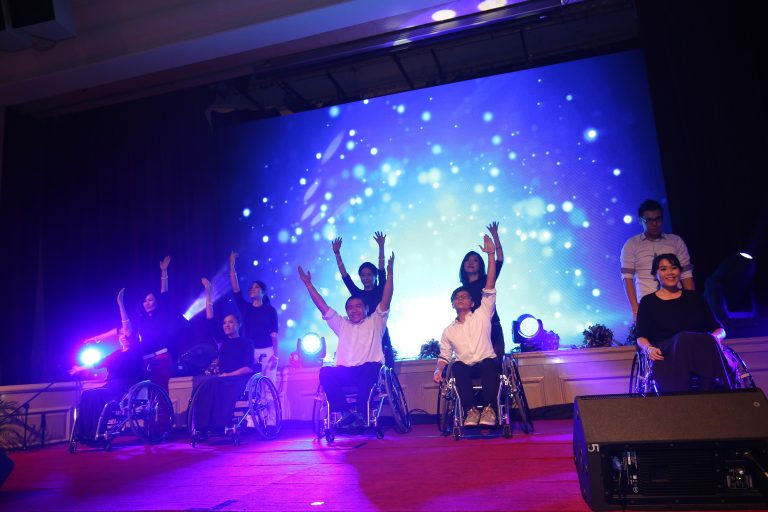 Stellar Night Gala Dinner (2015)[/caption]
Stellar Night Gala Dinner (2015)[/caption]
Much of the rhetoric around dancers in wheelchairs in Malaysia is designed to evoke a feel-good emotional response, depicting the dancers as inspiring individuals because they are able to persevere and overcome the limitations of their disability. The abilities of able-bodied dancers presists as the standard. Writing about Dua Space Dance Theatre's work with Shuang Fu Independent Living Association, dance scholar Leng Poh Gee observes, “[The works] share a common theme that seeks to demonstrate how the disabled can eventually not only gain self-confidence, but that they are also able to help and comfort other disabled or able-bodied individuals ... The wheelchair dancers often play characters who are initially depressed and marginalized, but subsequently cheered and encouraged by the able-bodied dancers.”
Cooper Albright describes this practice as the normalization of the disabled dancer, “reassuring prospective presenters and the press that they won't see anything too discomfiting.” What Cooper Albright calls the grotesque body – one that “shatter[s] the illusion of ease and grace by the disruptive presence of fleshy experience - heavy breathing, sweat, technical mistakes, physical injury, even evidence of a dancer's age or mortality” – is concealed, in favour of a tidy, disciplined body that upholds the status quo.
[caption id="attachment_65279" align="alignright" width="420"] Low Mee Li, Chin Wee Chuan (2017)[/caption]
Low Mee Li, Chin Wee Chuan (2017)[/caption]
A final parallel between dancers in wheelchairs and the general Malaysian dance community is the disinclination, especially among women, to thrust themselves into the spotlight. Perhaps this is even more apparent among dancers in wheelchairs, where ideas of community hold a special prominence.
Dua Space emphasizes that, “Integrated wheelchair dance is a community performance ... Community performance is communally created.” In this context, the individual body – with its distinct abilities as well as disabilities, its personal character, its singular aura – is subsumed to the common denominator of the group. I ask Mee Li why she doesn't do more solo performances. She smiles a little shyly and says, “The main aim is for the troupe to be a group activity.”
It's almost the end of the rehearsal. Mee Li leaves the conversation to join the other dancers for a few rounds of their current number. As timings or sequences inevitably get confused, the dancers good-naturedly josh one another, before returning to the hard work of striving for perfection. When the lyrics croon, “Feel the light,” Mee Li obediently stretches one of her finely-toned arms towards the flourescent bulbs overhead.
References
- Leng Poh Gee and Anthony Meh Kim Chuan. "Dancing in Wheelchairs: A Malaysian Story." In Dance, Access and Inclusion: Perspectives on Dance, Young People and Change, edited by Stephanie Burridge and Charlotte Svendler Nielsen. Routledge, 2017.
- Cooper Albright, Ann. "Strategic Abilities: Negotiating the Disabled Body in Dance." In Moving History/Dancing Cultures, edited by Ann Dils and Ann Cooper Albright. Wesleyan University Press, 2001. First published in Michigan Quarterly Review 37 no. 3 (Summer 1998): 475-501.
Also on Arts and Disabilities in Southeast Asia:
- Art & Disabilities in Southeast Asia | Art Beyond Words | Nolet Soliven
- Art & Disabilities in Southeast Asia | The story of Epic Arts | Cambodia
The Author: Bilqis Hijjas is a contemporary dance producer, critic, and educator who usually lives in Kuala Lumpur, Malaysia.
Similar content
from - to
03 Jul 2013 - 07 Jul 2013
posted on
26 Oct 2011
25 Apr 2017

